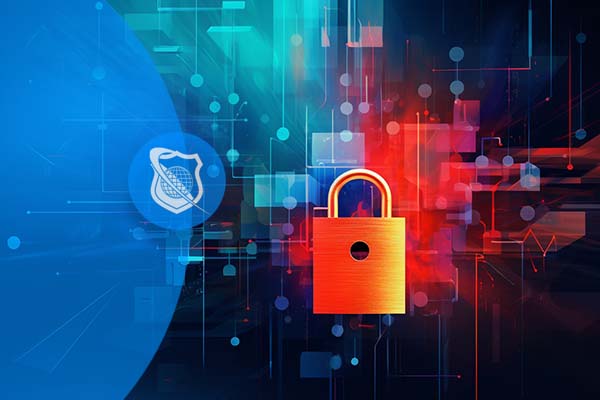Certified Information System Auditor (CISA): Your Key to a Thriving IT Career
In today’s fast-paced digital landscape, cybersecurity and information assurance are no longer optional—they are critical to organizational success and resilience. As cyber threats grow more sophisticated, organizations increasingly rely on skilled IT auditors and security professionals to safeguard their assets, ensure regulatory compliance, and optimize IT governance. The Certified Information System Auditor (CISA) credential has emerged as a gold standard in this field, offering IT professionals a clear pathway to career advancement, recognition, and increased earning potential. This comprehensive guide explores everything you need to know about CISA, from its core competencies to certification pathways, helping you determine how it can propel your career forward in the dynamic world of information security and audit.
Understanding the CISA Certification
The CISA certification is a globally recognized credential designed for IT auditors, security professionals, and risk management experts who evaluate an organization’s information systems and controls. It verifies an individual’s expertise in assessing vulnerabilities, implementing controls, and ensuring compliance with industry standards. The credential is issued by ISACA (Information Systems Audit and Control Association), a leading professional association dedicated to IT governance, risk, and security.
Since its inception in 1978, the CISA certification has evolved alongside technology and industry standards. It was created to address the increasing demand for qualified auditors capable of evaluating complex IT environments. The certification covers a broad range of competencies, including auditing processes, governance frameworks, security controls, and operational resilience. To qualify for CISA, candidates typically need relevant work experience in information system auditing, control, or security, along with a commitment to continuous professional development.
Core Competencies and Skill Areas
The CISA exam assesses proficiency across five key domains that reflect the competencies required for effective IT auditing and security management:
- Information System Auditing Process: Planning, executing, and reporting on IT audits using risk-based approaches.
- Governance and Management of IT: Establishing policies, standards, and procedures to align IT with organizational goals.
- Information Systems Acquisition, Development, and Implementation: Managing the lifecycle of IT projects and systems, including change management.
- Information Security: Protecting information assets through security controls, incident management, and risk mitigation.
- Information Systems Operations and Business Resilience: Ensuring operational effectiveness, disaster recovery, and business continuity planning.
Prerequisites and Eligibility Criteria
To sit for the CISA exam, candidates must meet specific prerequisites, including a minimum of five years of professional work experience in information systems auditing, control, or security. Some substitutions are allowed for up to three years of experience with relevant education, such as a degree in computer science or cybersecurity. Additionally, candidates must agree to adhere to ISACA’s Code of Professional Ethics and Continuing Professional Education (CPE) requirements to maintain their certification.
Key Domains Covered by the CISA Exam
Information System Auditing Process
This domain emphasizes the methodologies and best practices for auditing IT systems. Candidates learn how to plan audits based on risk assessments, gather evidence through interviews, observations, and testing, and prepare comprehensive audit reports. Understanding risk-based auditing is essential, as it allows auditors to prioritize vulnerabilities and focus resources on areas that pose the greatest threat to organizational objectives.
For example, a CISA-certified auditor might evaluate a company’s data center controls, review system logs, or assess cloud security measures. This process helps organizations identify weaknesses before they can be exploited, ensuring the integrity and confidentiality of critical data and systems.
Governance and Management of IT
This domain covers the frameworks and policies that ensure IT aligns with business objectives. Candidates learn to establish and maintain effective IT governance structures, develop policies that promote compliance, and oversee the management of IT resources. Ensuring regulatory compliance with standards such as GDPR, HIPAA, or Sarbanes-Oxley is a critical aspect of this domain.
For instance, a CISA professional might assist an organization in developing an IT risk management framework that integrates with overall corporate governance, ensuring that IT investments deliver value and comply with legal requirements.
Information Systems Acquisition, Development, and Implementation
Here, the focus is on managing the entire lifecycle of IT projects—from initial planning and requirements gathering to deployment and post-implementation review. Change management processes are vital to minimize disruptions and maintain control over modifications to systems and applications.
An example includes overseeing the rollout of a new customer relationship management (CRM) system, ensuring that security controls are integrated from the outset and that proper testing and documentation are in place.
Information Security
This domain addresses the strategies and controls used to protect organizational assets from threats. Candidates learn how to implement security controls, perform vulnerability assessments, and respond to incidents effectively. They also explore risk management approaches and security frameworks like ISO 27001 or NIST.
A practical example involves developing an incident response plan following a data breach, ensuring the organization can contain and remediate threats swiftly while minimizing damage.
Information Systems Operations and Business Resilience
Operational effectiveness, disaster recovery, and business continuity planning are central to this domain. Candidates learn to evaluate operational controls, manage IT service delivery, and develop strategies for resilience against disruptions.
An example is conducting a business impact analysis to determine critical functions and designing recovery procedures that enable rapid resumption of services after an outage.
Benefits of Earning the CISA Certification
Achieving CISA certification delivers multiple tangible and intangible benefits. Foremost, it significantly enhances a professional’s credibility and reputation within the industry, signaling expertise and commitment to high standards. Certified professionals are often perceived as trusted advisors and vital assets to their organizations’ security and compliance efforts.
Additionally, CISA opens doors to a broader range of job opportunities across various sectors, including finance, healthcare, government, and consulting. The certification is highly valued by employers seeking skilled auditors capable of managing complex IT environments and regulatory challenges. This recognition often translates into higher salaries, bonuses, and career advancement prospects.
Joining the global network of CISA-certified professionals also provides access to exclusive resources, webinars, conferences, and peer groups, fostering continuous learning and professional growth. This community offers invaluable support, mentorship, and industry insights.
Preparing for the CISA Exam
Educational Background and Experience
While there is no formal degree requirement, a background in computer science, information security, or related fields enhances understanding of core concepts. The critical requirement is relevant work experience, with a minimum of five years in roles involving IT auditing, control, or security.
Study Resources and Official Training
Effective preparation involves leveraging official ISACA materials, including the CISA Review Manual, practice questions, and online courses. Many training providers offer instructor-led classes, webinars, and self-paced modules tailored specifically for CISA candidates. IT training platforms like ITU Online Training also provide comprehensive courses aligned with the exam domains.
Study Strategies and Time Management
Creating a structured study schedule that covers all domains over several months is crucial. Breaking down topics into manageable segments, setting weekly goals, and reviewing regularly helps reinforce knowledge. Practice exams are invaluable for familiarizing oneself with question formats and assessing readiness, guiding focus areas for further review.
Exam Day Tips
On the exam day, arrive early, stay calm, and read questions carefully. Manage your time efficiently, ensuring you have enough opportunity to answer all questions. Remember to review your answers if time permits, and rely on your preparation to navigate even the most challenging questions confidently.
Career Opportunities with CISA Certification
Roles and Job Titles
- IT Auditor: Conducts independent assessments of IT controls and compliance.
- Security Analyst: Monitors security threats, implements controls, and responds to incidents.
- Compliance Officer: Ensures adherence to regulatory standards and internal policies.
- Risk Manager: Identifies, evaluates, and mitigates IT-related risks.
- IT Governance Consultant: Advises organizations on aligning IT strategy with business goals.
Industries with High Demand
- Banking and Financial Services: Highly regulated environments requiring rigorous audits and controls.
- Healthcare: Protecting sensitive patient data and meeting compliance standards like HIPAA.
- Government and Public Sector: Ensuring cybersecurity and safeguarding critical infrastructure.
- Technology and Consulting Firms: Providing specialized audit and security services to clients across industries.
Pathways for Career Growth
Starting as an internal or external auditor, CISA-certified professionals can advance into senior roles such as IT Audit Manager, Chief Information Security Officer (CISO), or IT Risk Director. Specialization options include cloud security, forensic auditing, or compliance consulting, further broadening career horizons and expertise.
Maintaining and Renewing Your CISA Certification
To retain the CISA credential, professionals must earn and report a minimum of 20 Continuing Professional Education (CPE) hours annually, accumulating at least 120 CPE hours over a three-year cycle. Staying current involves engaging in industry webinars, conferences, and courses that reflect evolving threats and best practices.
Adherence to ISACA’s Code of Professional Ethics and ongoing professional development ensures that certified individuals uphold high standards of conduct. Opportunities for advanced certifications, such as CISSP or CRISC, allow for further specialization and career diversification.
Challenges and Considerations
Balancing study commitments with work responsibilities can be demanding, especially for busy professionals. Effective time management and disciplined scheduling are essential. Keeping skills up-to-date in a rapidly changing environment requires continuous learning, which can be resource-intensive but ultimately rewarding.
The financial investment in exam fees, training courses, and study materials must be considered carefully. However, this investment often pays off through higher earning potential and expanded career opportunities. Practical experience remains vital; certifications complement real-world skills, not replace them.
Conclusion
The CISA certification stands as a cornerstone for IT professionals aspiring to excel in cybersecurity, audit, and risk management. It not only validates technical expertise but also opens doors to leadership roles and strategic influence within organizations. Pursuing CISA is a strategic move that signals a commitment to excellence and continuous growth in a field that is vital to the digital economy.
For those ready to elevate their careers, earning the CISA credential offers a tangible path toward professional recognition, increased earning potential, and a lasting impact on organizational resilience. Embrace the challenge, leverage the resources available, and step confidently into a future where your skills make a meaningful difference in safeguarding information and shaping IT governance.










